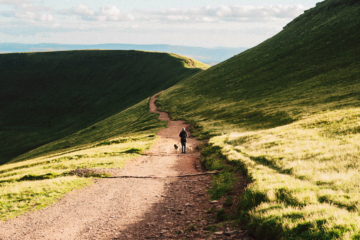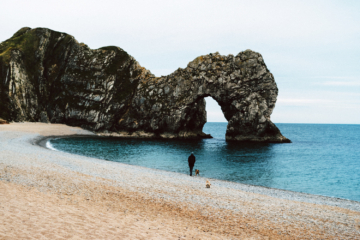Dogs in winter. Dogs in snow.
Few things put such a big smile on our faces like a first morning view across a white winter wonderland.
Before you get to enjoy our fun walk in the snow, I’m sharing my top winter tips with you. Because in winter, especially with snow and freezing temperatures, there are a few things to keep in mind.
1. Cold
Especially, dogs without undercoat tend to freeze in winter. If the dog freezes and does not warm up, despite exercise, please put a dog coat on him. You can recognize freezing by shivering, sitting down during breaks, making an agonized face and squinting his eyes. A good coat should be lined and definitely waterproof. Look for 10,000 or 20,000 water column. Really, only put the coat on, when the dog is making lasting signs that he is cold. Just because you yourself are cold, does not mean that your dog is cold. Putting coats on dogs for sheer fashion reasons is an absolute No-Go! I myself use Hurtta winter coats for my dogs.
2. Snow
Most dogs love snow. Many dogs eat snow. Many people throw snowballs. This is so far unproblematic, provided that the snow is clean. Snow near streets, along gritted paths or in industrial locations may contain toxic salts and should not be eaten or thrown.
3. Dog Shoes
Dogs need dog shoes, if they are injured, if they have to climb around on sharp rocks in high mountain snow or walk for hours on harsh, uneven frozen paths. I would also recommend dog shoes for long urban walks on paths strewn with salt. If there is no alpine or elemental danger lurking under the snow, it is absolutely no problem for dog paws, walking around in the cold snow for a few hours. Putting dog shoes on dogs for fashion reasons is an absolute No-Go!
4. Road Salt and Antifreeze
In general, we avoid road salt like the devil avoids holy water. If my dogs run through salt, they are obviously in pain afterwards. They lash out, prance around and want to lick their paws. Exposure to salt can’t be completely avoided. In the winter, we rinse their paws with water after every single walk outside our own property. If we had to grit ourselves, it would be exclusively with sand and pebbles. If we were forced to take a walk through heavily gritted areas, my dogs would wear paw protection. Puddles near the road should also be avoided. These are often contaminated with highly toxic antifreeze.
5. Dog Food in Winter
In the cold winter, a dog consumes more calories than in the moderate season. The body has to heat to a greater extent. My dogs usually lose weight in winter. If this is not desired, I have to increase the food ration. I do this mainly by increasing the fat content in the food. Only when the cold is accompanied by increased exercise, e.g. long hiking tours at the North Sea, I also increase the amount of carbohydrates. More about dog food here.
Thank you for your attention.
Now I wish you a lot of fun in the snow!

























































